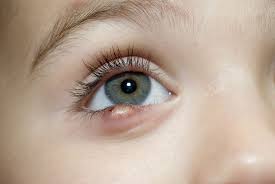Stye, also known as a hordeolum, is a bacterial infection of an oil gland in the eyelid.This results in a red tender bump at the edge of the eyelid.
How It Develops
When dead skin, dirt, or oil accumulates in the oil gland along the edge of the eyelid, bacteria start to grow inside of it, which causes a stye. However, a stye may also develop under the eyelid since there is a gland opening there. This type of stye is known as an internal hordeolum.
Causes of Stye:
- Bacteria – If the bacterium Staphylococcus aureus gets into the oil gland, it can cause a stye. It invades the meibomian gland and causes internal styes or the glands of Zeis, which leads to external styes.
- Trapped oil – On the lining of the eyelid are tiny ducts, which produce an oily substance. This helps in the lubrication of the eye and prevents the evaporation of tears. Sometimes, the gland can get blocked. To clean out the blocked oil, the body may mount an immune response, which may cause a stye-like lump called chalazion.
- Poor hygiene – Not washing off eye makeup at night may result in a stye. Makeup, dirt, and oil are accumulated and may block the glands and cause an infection. Touching the eyes with unwashed hands may cause the bacteria to spread to the eyelids. Hence, always wash your face and hands regularly and do not touch your eyes until your hands are clean.
- Stress – When we are stressed, we may not wash our face as often we should do, and fatigue may cause us to rub our eyes frequently. Stress can also weaken the immune system and make our body susceptible to infections including the ones that can cause a stye.
- Dry eyes – Certain medications such as decongestants, hereditary condition, staring at the computer for longer periods of time can cause dry eyes. When our eyes do not make enough tears to clean our eyes from impurities, styes may develop.
Symptoms of a Stye:
The early symptoms of a stye are mild. Generally, these symptoms are known to cause slight discomfort or redness along the eyelash line. They may also cause irritation to the affected eye.
Other symptoms may include:
- A red bump, which resembles a pimple that is seen along the edge of the eyelid and close to the eyelashes
- Presence of a tiny yellow spot in the middle of the bump
- A feeling as though something is in the eye
- Sensitivity to light
- Discharge from eye or crustiness along the eyelid
- Excessive production of tears
- A chalazion leads to similar symptoms, but the lump is usually painless and hard






